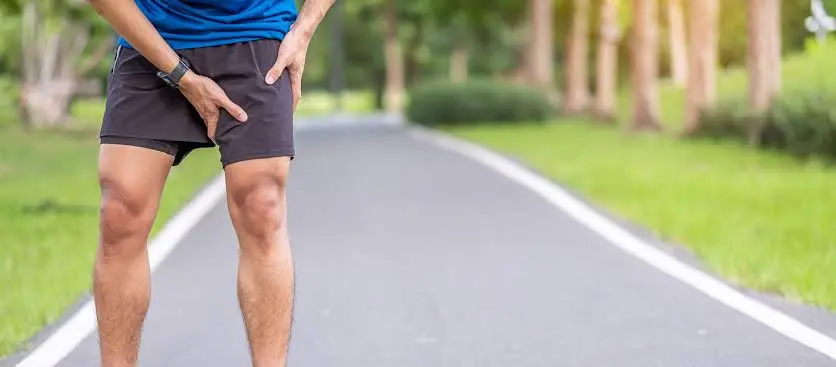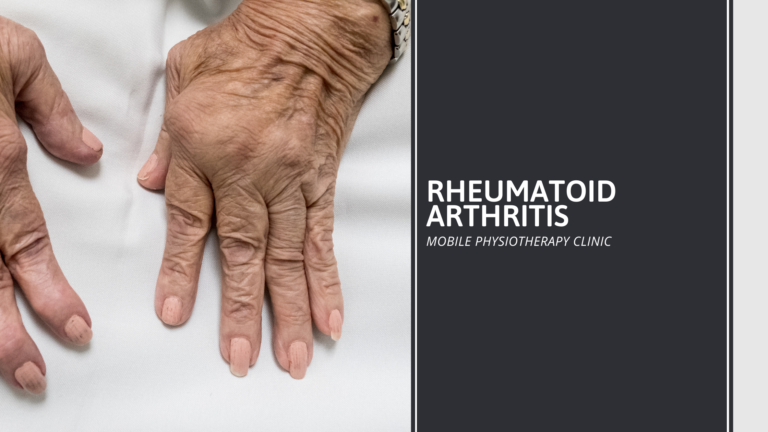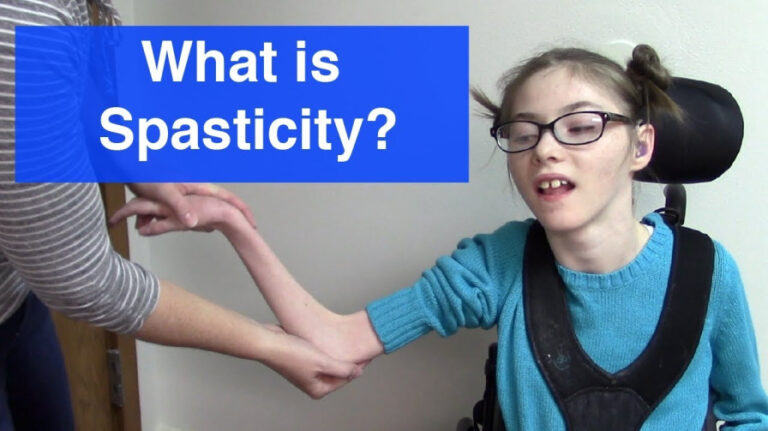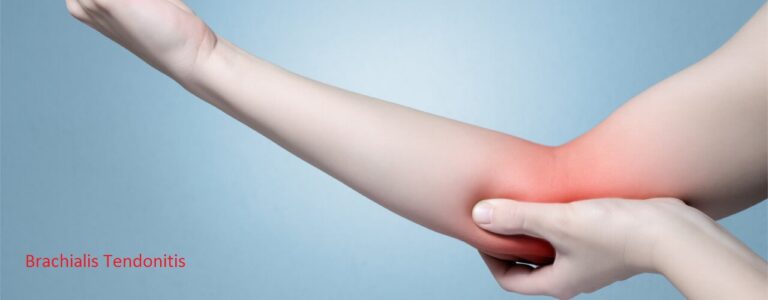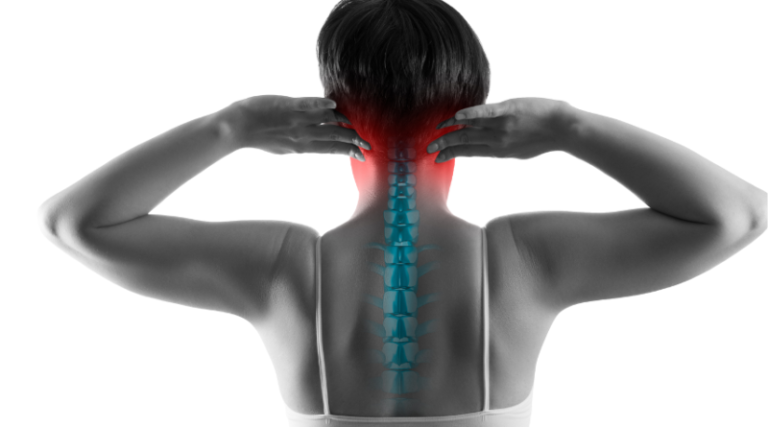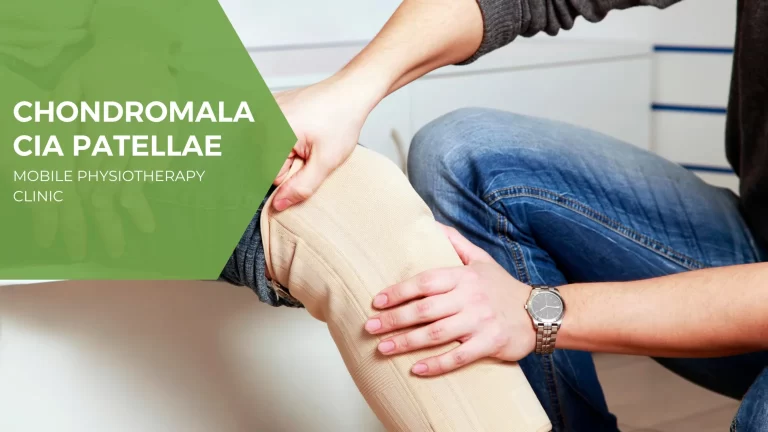Pectineus Muscle Pain
Table of Contents
Introduction
- Pectineal muscle pain occure in the activities known as Running, skating, kicking a soccer ball, playing basketball, and engaging in other physical activities while your muscles can cause strain and tension on the pectineus muscle, resulting in an excruciating injury. The patient experiences numbness and weakness in the affected leg.
- The quadrangular, flat pectineus muscle helps to flex and move the leg in the direction of the body.
- The medication, the rice principle, and the physiotherapy treatment all help to relieve this pain.
Anatomy of the Pectineus muscle
Anatomy of the pectineus muscle of the lower limb in the human body is mentioned below,
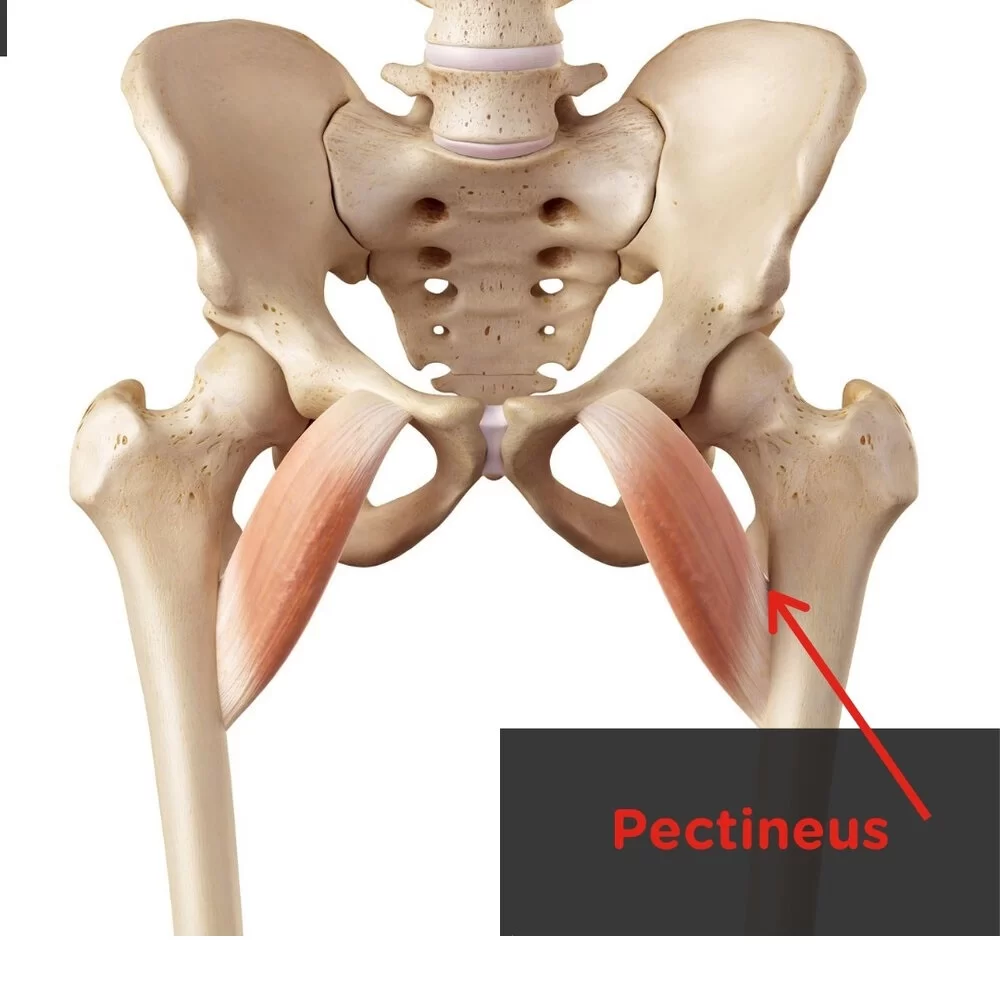
- Along with a set of four basic big muscles, the Pectineal muscle is one of the muscles on the medial thigh that aids in hip adduction and flexion. The Adductor Longus, Adductor bravis, Adductor Magnus, and Gracilis muscles are among these main muscles; they are mostly involved in hip adduction.
- This muscle is used when playing basketball, kicking a soccer ball, skating, and running. An adductor strain can happen in this muscle when you play sports or when you’re tired. Physiotherapy is frequently used in treatment.
- When the function is highlighted, the pectineal can be categorized in the medial compartment of the thigh; when the nerve is highlighted, it can be classed in the anterior compartment of the thigh.
Origin of the pectineus muscle
In the pelvic bone on pectineal line (pecten pubis)
Insertion of pectineus muscle
The oblique line running from the lesser trochanter’s base to the linea aspera on the femur’s posterior surface
Arterial supply of pectineus muscle
The anterior branch of the obturator artery supplies the deep section, while the medial circumflex femoral artery supplies the superficial part.
Nerve supply of pectineus muscle
The femoral and occasionally the obturator nerves innervate the pectineus, which is regarded as a transitional muscle between the anterior and medial thighs.
Relation of pectineus muscle
Relation of pectineus muscle of the lower limb in the human body is mentioned below,
- Located in the frontal plane. Medial to the longus adductor.
- It is connected laterally to the medial circumflex femoral vein and artery as well as the psoas major muscle. Together with the adductor longus, the anterior side of the pectineus comprises the medial portion of the femoral triangle.
- The dense layer of fascia late that covers the pectineus surface divides it from the femoral artery, femoral vein, and great saphenous vein that passes through the femoral triangle.
The action of the pectineus muscle
actions of pectineus muscle of the lower limb in the human body is mentioned below,
- When pectineus muscles contract, the thigh is simultaneously flexed and adducted at the hip joint because of the direction of its fibers. This flexion extends until the point where the thigh is at a hip joint at a 45-degree angle.
- Thigh adduction results from the muscle fibers angulation contracting at that location, pulling the thigh in the direction of the midline.
Causes of the Pectineus muscle pain
Stretching the leg excessively to the front or side of the torso can result in pectineus muscle injury. This may be the result of moving quickly or overstretching the muscle.
The following activities are linked to pectineus injuries
- When jogging or jumping participating in sports, changing directions too rapidly
- Work out with sore muscles
- Over Stretching the adductor muscle causes muscle insufficiently
- Stamping
- Hip bursitis
- Fracture of the hip
- Taking part in football, football or basketball
- Running
- Strain in the Groin
A groin pull or strain is the most typical cause of pectineus pain. An injury to the inner thigh muscles results from a tearing or damage to the muscle fibers
Groin strains come in three different degree
- Grade 1: Up to 5% of muscle fibers may be damaged due to overstretched or torn muscles.
- Grade 2: A more serious rip that results in more damage to the muscle fibers
- Grade 3: A rupture involving most or all of the tendon or muscle. Hip adductor muscles, primary hip flexor muscles, or a mix of the two may be impacted by a groin strain.
Sign of strain in pectineus muscle
The following are the most typical signs of a pectineus muscle injury:
- Bruising and pain
- Swelling
- Over Sensitivity
- rigidity due to pectineus muscle pain
- When you close your legs or raise your knee, a groin strain may result in pain at the front of your hip. A pop or snap may be audible at the scene of the injury. Mild to severe pain is possible.
The degree of strain will determine how much discomfort you experience and how well you can use your leg
- Grade 1: This strain might not hurt when walking, but it might hurt when sprinting, jumping, or stretching.
- Grade 2: You could require crutches to walk in this grade.
- Grade 3: This injury may result in acute, excruciating pain, bruising, and swelling. It’s possible that you can feel the area where muscle fibers have a tear.
Prevention of the Pectineus muscle pain
prevention of the pectineus muscle pain of in the human body is mentioned below,
- Stretching your groin area before and after activities can help prevent pectineus injuries. The following stretches aid in maintaining the pectineus muscle’s optimal function:
- Butterfly stretching for any activity
- Stretching with your legs crossed
- Stretching your adductors while standing
- squat and extend your adductors
When to see a doctor in case of pectineus muscle pain?
Even though you might prefer to treat the injury yourself, get help right once if any of the following apply
- You’ve had sudden or intense groin discomfort or swelling.
- Your upper thigh or groin area feels chilly, pale, or has changed in color.
- Your leg or groin area is tingling, weak, or numb.
- Your leg is immobile. And you are unable to do activities.
- Despite seeing your healthcare professional, your condition does not improve as predicted.
Diagnosis of the Pectineus muscle pain
A physical examination is used to evaluate pectineus muscle pain. Your medical professional most likely will:
- Inquire about the nature of your symptoms, and when they first appeared, and give you a pain scale from 1 to 10.
- Check for any indications of swelling or bruises in that location. To check the range of motion, move your leg in several different directions.
- The location and severity of the injury can occasionally be determined by imaging procedures such as musculoskeletal ultrasonography (US) or magnetic resonance imaging (MRI). These examinations reveal: Ligaments, muscles, nerves, tendon attachment sites on bones, and treatment
Differential diagnosis of Pectineus muscle pain
- Pain and strain have historically been seen as complicated conditions with a variety of definitions and terminologies and no established diagnostic standards. The complexity of groin strain in athletes is increased by the fact that more than thirty distinct diagnostic terminologies were used to define pectineus discomfort in a systematic review of the treatment of groin pain in athletes.
- During the Doha accord meeting, a classification scheme for groin discomfort was described in three primary subheadings.
Related to musculoskeletal disease
causes related to musculoskeletal disease is mentioned below,
- groin pain associated with an adductor
- groin ache associated with iliopsoas
- groin pain associated to the inguinal region
- groin ache associated with the pubis
- hip-related groin discomfort
- Femoral or inguinal hernia
- Pain following a post hernioplasty
Entrapment of the nerves
causes related to Entrapment of the nerves is mentioned below,
- Obturator nerve Entrapment
- Ilioinguinal nerve Entrapment
- Genitofemoral nerve Entrapment
Reference of iliohypogastric discomfort
causes related to Reference of iliohypogastric discomfort is mentioned below,
- The Lumbar region
- The sacroiliac joint
- Both avulsion fractures and apophysitis
- The iliac spine on the anterior side and the posterior side
- The pubic bone
Not to be forgot
causes related to disease which is not forgotable mentioned below,
- Stress fracture
- fracture of the neck of femur
- Pubic ramus fracture
- Hip disarticulation
- Perthes disease in juveniles and teenagers
- Temporary osteoporosis or avascular necrosis of the head of femur
- hip Joint arthritis
- Inguinal lymphadenopathy
- Urinary tract infections and prostatitis
- kidney Stone
- Diverticulitis
- gynaecology related Problems
- Spondyloarthritis
- koch spine
- ankylosing Spondylitis
- Testicular cancers
- bones Tumors
- The prostate Cancer
- urinary tract Carcinoma
- digestive system Cancer
- Soft tissues Tumors
Treatment Pectineus muscle pain
Treatment according to protocol
- The R.I.C.E. denotes elevation, compression, rest, and ice. This is a self-care technique to use as soon as you sustain a minor wound. After used to promptly alleviate pain and swelling.
- This will address the possibility that the R.I.C.E. method is out of date, as well as guide how to handle each step of the procedure and when it’s necessary to seek medical attention.
Rest
- Resting can help wounded tissue heal more quickly and stop additional damage from occurring. In the absence of rest, weight-bearing and movement can exacerbate an injury and result in further Edema and inflammation. If at all not stopped, the damaged area should be rested for 48 hours, or at least no undue stress should be applied to it. You might have to avoid using your injured leg at all and avoid bearing any weight on it. Relieving pressure on an injured joint or limb can be achieved with the use of mobility aids or assistive equipment, such as a cane or sling.
Ice
- Ice can help ease the pain and swelling that come with a recent injury. It is thought that applying ice to an injury during the first few hours of it happening will have the most impact. Ice can be applied for up to twenty minutes at a time and up to once per hour.
- Use a small bag filled with cold gel or ice, but avoid putting an ice pack on your skin directly. To prevent the ice from coming into contact with your skin, wrap the ice bag in a towel or other cloth. Gel or cold packs that are sold for this purpose frequently come with a cover. It is not recommended to apply an ice pack to an injury for longer than 20 minutes at a time. This may result in an ice burn or skin injury. Allow your skin to warm up a bit after removing the ice pack before applying another layer of icing.
Compression
- Compression of a sore or damaged wrist, ankle, or knee aids in the reduction of edema. Elastic bandages work well most of the time like ACE wraps. Splints, air casts, and special footwear
- A compression bandage should not be applied too firmly as this may obstruct your blood flow. The bandage is most likely too tightly placed if you are experiencing throbbing; remove it and reapply it more freely. Raise the affected area of the body above the level of the heart. This may lessen discomfort and swelling by creating a descending conduit for fluid to return to the heart. Make an effort to raise the limb six to ten inches over the heart. You can elevate the wounded limb by lying down and using a pillow.
Elevation – elevate your legs.
Surgical treatment of the pectineus muscle pain
Most injuries to the pectineus muscle recover on their own. Rarely, a damaged groin muscle may require surgery to repair. Many surgeons adapt to repair the muscle while others believe in conservative protocols and ask patients to wait and continue the exercise if they recover from it.
Exercises of the pectineus muscle pain
Physical therapy is usually required after surgery to fully recover hip function. here is some exersises which is help to reduce pain in pectineus muscle.
DYNAMIC WARMUP FOR THE PECTINEUS MUSCLE PAIN
Supine Bicycle Kicks
on the ground, in a supine position. As you raise your legs and bend your knees, simultaneously bring your right knee to your chest extend it, and bring your left knee towards your chest. this exercise is one of the many exercises which relieve pain in the pectineus muscle which is the muscle of the groin in the lower limb in the body.it is useful treatment to decrease the pain in the groin muscle which is known as pectineus muscle in the lower limb. For 30 to 60 seconds, keep alternating (as though you were pedaling). After 30 seconds of rest, repeat
With interval sprints in place
Drive your knees quickly to your chest and raise and lower your arms steadily for 20 seconds. For ten seconds, slow down, and then fifteen seconds, pick up pace. After resting, repeat.
Strengthening exercises for the pectineus muscle pain
Prone planks
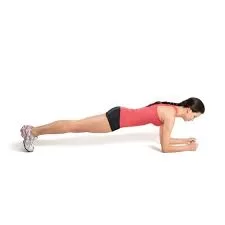
- Put your forearms on an exercise mat and your feet on a bench or chair to start in a prone posture.
- Maintain a straight back, contract your abdominal muscles, and hold for thirty seconds. Turn to your right instantly and elevate your hips while placing your feet on the bench or chair and resting on your right forearm.
- For thirty seconds, extend your left arm overhead and keep it there. Make a left turn, then take a 30-second hold while resting on your left forearm and lifting your right arm overhead. it is useful treatment to decrease the pain in the groin muscle which is known as pectineus muscle in the lower limb.
- To conclude, assume a Supine Plank posture, resting on your forearms for 30 seconds with your hips off the mat and your heels resting on the chair or bench. Take a nap, drink plenty of water, and using a resistance band, do side lunges. this exercise is one of the many exercises which relieve pain in the pectineus muscle which is the muscle of the groin in the lower limb in the body.
- Take an athletic stance with a resistance band above your knees. Ten lunges laterally left, followed by ten lunges laterally right. Refuel, relax, and carry on.
Exercise for standing hip flexion
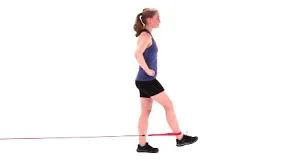
- The patient confronts a bench or other elevated surface, such as a stable and secure chair.
- Keep your distance from it at around the length of your leg.
- Place one foot on the bench and the raised surface while using your hands to control your hip joint.
- With the torso still straight, slowly bend the lifted leg and allow it to lunge forward.
- As the patient’s strength grows, they can hold this stretching posture for longer. To begin, push the hip joint slightly forward and keep it there for at least two seconds. this exercise is one of the many exercises which relieve pain in the pectineus muscle which is the muscle of the groin in the lower limb in the body.
- Do ten reps of this exercise on one side, and then switch to the other leg. This activity should be done 3 to 4 times in 24 hours. Hold this posture for up to 29 to 35 seconds.
Leg raise in a supine position
With your hands beneath your hips and your lower back for support, lie on your back on the workout mat. Raise your legs about 1-2 inches above the mat while keeping them stretched and close together. this exercise is one of the many exercises which relieve pain in the pectineus muscle which is the muscle of the groin in the lower limb in the body.
COOL DOWN FOR THE PECTINEUS MUSCLE PAIN
Seated groin stretch or butterfly stretch

With your feet together and knees bowed, take a seat on the mat. Laterally, slowly lower both legs to the mat. this exercise is one of the many exercises which relieve pain in the pectineus muscle which is the muscle of the groin in the lower limb in the body. This activity should be done 3 to 4 times in 24 hours. Hold this posture up to 29 to 35 seconds.
Lunge to one knee
Starting with your left knee on the mat and your right leg lunging, adopt a Kneeling Lunge position. Put your right hand Bending at the right knee, raise your left arm above your head, and move it slightly to the right of your torso. Lean slightly forward with your right leg to feel the stretch in your pectineus and upper body (shoulder and lat muscles). This activity should be done 3 to 4 times in 24 hours. Hold this posture upto 29 to 35 seconds. Next, move to your left leg. Right knee and lunge onto the mat. this exercise is one of the many exercises which relieve pain in the pectineus muscle which is the muscle of the groin in the lower limb in the body.
Squeeze in Isometric Form
Position a ball between your thighs while seated in a chair. Tension the ball by squeezing the legs together. Hold for five seconds, then let go. this exercise is one of the many exercises which relieve pain in the pectineus muscle which is the muscle of the groin in the lower limb in the body. Do three sets of ten repetitions of the movement.
Exercises for the Pectineus Muscle Have Health Benefits.
- When it comes to strengthening exercises, they are commonly disagreed about benefits, but this is a mistake. You avoid the risk of getting groin injuries if you don’t strengthen these muscles.
- We go over a few advantages of performing pectineus workouts below.
- Better Equilibrium Exercises that improve balance assist us in maintaining our upright posture when performing excessive lateral movements. Unilateral hip adductor exercises are also recommended because they target the tiny muscles and enhance balance. this exercise is one of the many exercises which relieve pain in the pectineus muscle which is the muscle of the groin in the lower limb in the body.
- Increased Rotational Power: Our bodies can generate more rotational power when we have strong hip adductors. These adductor muscles help to sustain some of the rotational power and torque needed for the internal rotation of the hips, which is necessary in sports like baseball and tennis. this exercise is one of the many exercises which relieve pain in the pectineus muscle which is the muscle of the groin in the lower limb in the body.
- Boost Hip Extension: Squats and deadlifts are two major compound movements in which hip extension is crucial. this exercise is one of the many exercises which relieve pain in the pectineus muscle which is the muscle of the groin in the lower limb in the body. Including hip adductor exercises in your regular training regimen will help you carry heavier objects, perform better in sports, and simplify daily tasks.
- Lower Risk of Injury: Sportsmen and even people in regular life frequently suffer groin pulls. Tight or weak hip adductors are the cause of groin strains. The risk of this injury can be reduced by stretching and strengthening the adductor muscles.
- This muscle group is very important to athletes since it facilitates explosive motions like running, jumping, and fast side-to-side motion.
What Happens After a Pectineus Muscle Strain Feels Better?
- Everyone wants to know how soon they may resume their activity following a groin strain and when the discomfort will subside. But there’s no simple solution. The severity of the groin strain determines how long it takes to heal. That’s only an approximate time estimate; it might take four to six weeks. Individuals recover at varying speeds.
- Change to a different activity in the interim that won’t overstress your groin muscles. For example, swimmers should attempt running or any highest plyometric activities.
- In whatever you do, take your time. Don’t attempt to resume your previous degree of physical activity until after:
- The wounded leg can be moved with the same freedom and ease as the uninjured leg.
- The injured side’s leg feels just as strong as the uninjured side’s leg.
- You have no pain when you run, walk, sprint, or jump.
- You run the risk of reinjuring yourself if you begin exerting yourself before the groin strain heals. Additionally, groin strains may be more difficult to treat and take longer to cure if they worsen. They may even cause irreversible impairment.
Massage in the pectineus muscle pain
To ease discomfort and tightness in the pectineus muscle, take a seat on a chair or mat and gently massage the area for 30 seconds with your thumb or index finger. it is useful treatment to decrease the pain in the groin muscle which is known as pectineus muscle in the lower limb. To maximize your recovery and reduce the likelihood of a recurrence, you should consult a physiotherapist if you have injured your pectineus muscle.
Heating therapy in the pectineus muscle pain
After the swelling has subsided after two to three days of muscle soreness, administer heat using a heating pad and a warm water bottle until the patient’s groin area feels comfortable. But always remember to look after this.it is useful treatment to decrease the pain in the groin muscle which is known as pectineus muscle in the lower limb. Avoid sleeping with a heating pad on your skin as this can cause burns.
Electrotherapy in the pectineus muscle pain
SWD, TENS, IFT, and the US machine, which reduces pain and swelling, are all part of this treatment for pectineus muscle pain. it is useful treatment to decrease the pain in the groin muscle which is known as pectineus muscle in the lower limb.
To minimize edema, trigger points, and painful spots are treated with ultrasound therapy using US equipment. Applying short-wave diathermy (SWD) to a sore muscle area helps to relieve the discomfort. There is an IFT and TENS machine for this condition of pectineus muscle pain
Release of Pectineus muscle in pectineus pain
Some persons will attempt self-release of the Pectineus muscles using a ball and different massage techniques.it is useful treatment to decrease the pain in the groin muscle which is known as pectineus muscle in the lower limb. To get the right care for your injury if you are not familiar with muscle release techniques, we recommend seeing a local physiotherapist. this exercise is one of the many exercises which relieve pain in the pectineus muscle which is the muscle of the groin in the lower limb in the body. Additionally, they can offer you a suitable rehabilitation programm that will strengthen your pectineus and help you prevent injuries in the future.
Trigger Points of Pectineus muscle
it is useful treatment to decrease the pain in the groin muscle which is known as pectineus muscle in the lower limb.
There is a trigger point on the Pectineus muscle close to its origin. A therapist may use a variety of techniques, including compression, dry needling, massage, and stretches, to help release the affected pectineus muscle. If you are knowledgeable about how to release muscle, you might attempt stretching and massaging yourself at home.
Summary
- The pectineus muscles extend from the pubic bone to the groin or upper part of the inner thigh. It is a muscle group in the hip adductor that moves your leg, Along with a set of four basic big muscles, the Pectineal muscle is one of the muscles on the medial thigh that aids in hip adduction and flexion. The Adductor Longus, Adductor bravis, Adductor Magnus, and Gracilis muscles are among these main muscles;
- Sports injuries like groin tears or pulls might result in pectineus pain. Pectineus muscle pain can also result from overstretching the hip to the side or front, such as when you sit with your legs crossed for an extended period.
- The majority of pectineus injuries recover naturally over time. Ice and rest the wounded region at home to reduce pain. See your doctor if you are experiencing excruciating pain, tingling, or numbness in that limb, or if you are unable to bear weight on it.
FAQs
Every fifteen to twenty minutes, ice. Take a three to six-week break from any activities that might strain the pectineus. The pectineus muscle will heal if stretching and exercise are gradually resumed.
Pain is a main symptom of it and Additional other symptoms could be stiffness, tenderness, swelling, and bruises.
The anterior (or front) and medial (or inner) portions of the upper thigh are where the pectineus muscle is situated in the medial compartment of the thigh.
Avoid walking and other painful activities to give the area rest.
The Pectineus muscle facilitates the adduction of the hip and knee flexion.
overextending one or both legs out to the side of the body. running or power walking with prolonged strides. exercising vigorously after the pectineus muscle has reached a state of fatigue.
The pectineus was only slightly activated during exercises requiring rotational hip stabilization in either direction, but it was highly activated during hip flexion exercises.
The pectineus is a brief, quadrangular muscle that runs from the pubis to the region directly below the femur’s lesser trochanter. Starting from the pectineal line of pubis on the superior pubic ramus, it has the most superior attachment of all the thigh adductors.
Located at the medial aspect and anterior region of the upper leg, the Pectineus is a quadrangular, flat muscle.
A pectineus muscle injury is the most typical cause of pectineus pain. Stretching the leg too far out in front of the body or to the side can potentially cause damage to the pectineus muscle.
The pectinate muscles are parallel muscular columns with the shape of “teeth of a comb” that are located on the inner wall of the left and right atria. While the pectinate muscles in the left atrium are mostly smooth, those in the right atrium are thick and coarse.
overextending one or both legs out to the side of the body. running or power walking with prolonged strides. exercising vigorously after the pectineus muscle has reached a state of fatigue.
References
How to treat pectineus pain? (2023, January 1). https://www. melbourne sport sphysiotherapy.com.au/ blog- articles /2023 /how -to- treat -pectineus -pain
Pectineus muscle. (n.d.). Physiopedia. https://www. physio-pedia .com/ Pectineus_ Muscle
Eustice, C. (2023, November 6). R.I.C.E. Treatment for Acute Musculoskeletal Injury. Verywell Health. https : //www.verywellhealth.com/ what- is- rice- 190446
Groin pull. (2007, February 28). WebMD. https ://www.web md.com/ fitness- exercise/groin- pull
Schantz- Feld, M. (2023, August 16). Pectineus pain: causes and treatment. Verywell Health. https: //www. verywellhealth. com /pectineus- muscle- anatomy- 5084562#toc- what- causes-pectineous -pain
Physical therapist’s guide to groin strain. (2020, June 17). https://www.myactionpt.com /physical- therapist-s -guide -to- groin- strain
Ladva, V. (2023, August 30). Pectineus muscle pain: Cause, Symptoms, Treatment, Exercise. Samarpan Physiotherapy Clinic. https ://samarpan physioclinic.com/pectineus- muscle-pain/#What _are_ the_ symptoms_ of_ the_ pectineus_ muscle_ injury
Rupapara, D. (2023b, January 18). Pectineus muscle pain. Mobile Physiotherapy Clinic. https://mobile physiotherapy clinic. in/pectineus- muscle- pain/
Suzan christian. (2022 march 26). Pectineus pain: causes and treatment. Verywell Health. https: //www verywellhealth.com /pectineus -muscle- anatomy- 5084562#toc- what- causes-pectineous- pain
& S. Z. K. (2023, June 12). Muscle breakdown: pectineus. Your House Fitness. https://www.yourhousefitness.com/blog/muscle-breakdown-pectineus#Pectineus_Release

